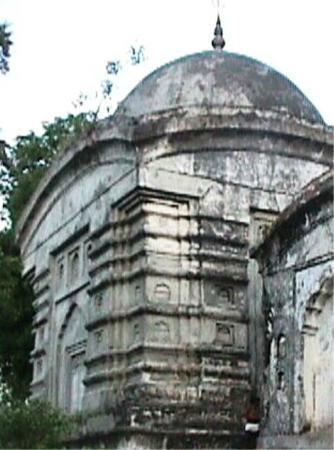 | ||
Gosanimari is both a village and an archaeological site in Cooch Behar district of West Bengal, north-eastern India. The name of this site was taken from the modern grampanchyat name of the Dinhata subdivision.
Contents
- Map of Gosanimari Takimari West Bengal 736145
- Excavation Site
- Excavation history
- Findings
- Rulers
- References
Map of Gosanimari, Takimari, West Bengal 736145
Excavation Site
The site contains ruins of ancient city of Kamtapur, capital of Kamata kingdom, occupying a large area of ancient Kamarupa and Vanga.
Excavation history
Dr.Buchanan Hamilton in 1808 had left a vivid description along with a sketch of the mound and site which still hold good in authenticity. According to Dr. R.D. Banerjee stodd as buffer kingdom between Ohoms of Assam and Muslim Kingdom of Bengal in the 15th century AD. He opined that the khens might built Gosanimari, but it is also possible that these Mongoloid people only used the ruins of fortification which had been built several centuries before. After the independence Archaeological Survey of India took over the responsibility of this site.
Findings
It is believed parts of the ancient kingdoms important temples and buildings are now buried under a large grass grown mound. So far two large stone wells have been excavated, along with a large stone walls and a number of idols too. Pottery work includes vases, bowls, basin, dish, beaker etc. The facial and physiognomical delineation indicate the idols are the products of c. 11th and 12th century AD and influenced by Pala-Sena school of art.
Rulers
The Kingdom of Kamata was between the 11-12th Century A.D. by the dynasties of Pala & Sena. Then after by the Khen dynasty in the 14th century AD until 1498 AD. Then the King Nilambara was defeated by the Sultan Hussein Shah of Gaud, who had it ruled by the Koch dynasty from early on in the 16th Century.
When the English came along they Anglicized the term Koch to Cooch, hence the name Cooch Behar State.
